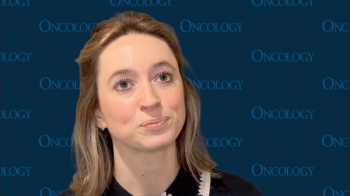
Rituximab, Fludarabine, and Cyclophosphamide Prolongs Progression-Free Survival in Relapsed or Refractory Chronic Lymphocytic Leukemia
Results from the multinational randomized phase III REACH trial demonstrate that the combination known as FCR (fludarabine, cyclophosphamide, rituximab [Rituxan]) provides a 10-month improvement in progression-free survival, compared with fludarabine/cyclophosphamide (FC) alone, and a near doubling of complete response rates in patients with relapsed or refractory chronic lymphocytic leukemia (CLL). The study results were presented by lead investigator Tadeusz Robak, md, of the Medical University of Lodz in Poland, at the 50th Annual Meeting of the American Society of Hematology (ASH), held Dec 6–9 in San Francisco (abstract LBA-1).
Results from the multinational randomized phase III REACH trial demonstrate that the combination known as FCR (fludarabine, cyclophosphamide, rituximab [Rituxan]) provides a 10-month improvement in progression-free survival, compared with fludarabine/cyclophosphamide (FC) alone, and a near doubling of complete response rates in patients with relapsed or refractory chronic lymphocytic leukemia (CLL). The study results were presented by lead investigator Tadeusz Robak, md, of the Medical University of Lodz in Poland, at the 50th Annual Meeting of the American Society of Hematology (ASH), held Dec 6–9 in San Francisco (abstract LBA-1).
Study Data
A total of 552 patient from 17 countries with relapsed or refractory chronic lymphocytic leukemia were randomized to receive six 28-day cycles of fludarabine (25 mg/m2 intravenously on days 1 to 3) and cyclophosphamide (250 mg/m2 intravenously on days 1 to 3) alone (FC) or in combination with rituximab (FCR, with 375 mg/m2 rituximab intravenously at the start of the first cycle and 500 mg/m2 on day 1 for all subsequent cycles). Patients previously had received an average of one previous treatment regimen, including a single-agent alkylator therapy (66%), a purine-analog therapy (16%), or combination chemotherapy treatments (18%). The primary endpoint of the study was progression-free survival.
Patients in the FCR arm achieved a 30.6-month progression-free survival compared with 20.6 months in the FC arm, translating into a significant 10-month increase in progression-free survival for FCR combination therapy. The overall response rate was significantly higher in the FCR arm (70%) as compared with the FC arm (58%), because of superior complete-response rates in the FCR arm (24% vs 13%, respectively). While median overall survival in the FC arm was reached at 53 months, it had not yet been reached in the FCR arm.
While grade 3 and 4 adverse events were more prevalent in the FCR arm (80%) as compared with the FC arm (74%), serious adverse events were similar in each treatment arm (50% vs 48%, respectively). Overall, the FCR combination showed a favorable risk-benefit profile and did not reveal any new or unexpected safety concerns.
Newsletter
Stay up to date on recent advances in the multidisciplinary approach to cancer.

















































































